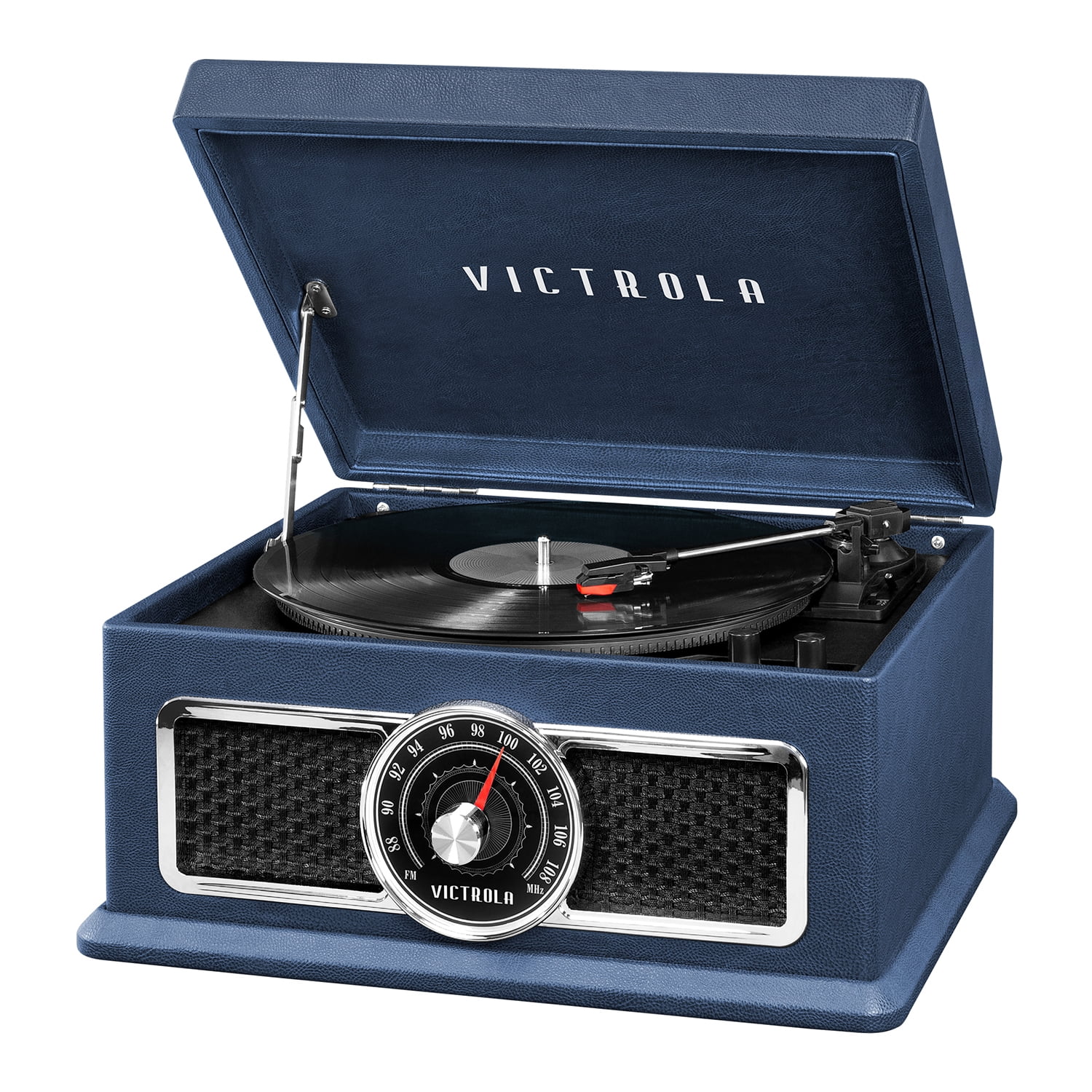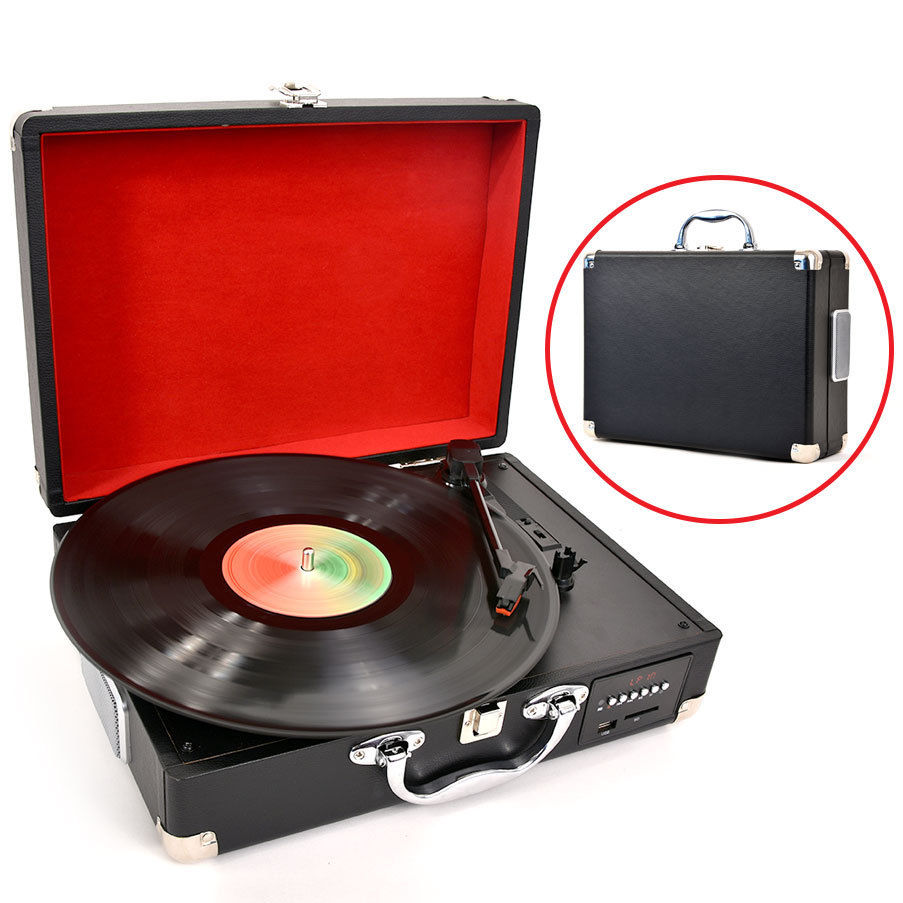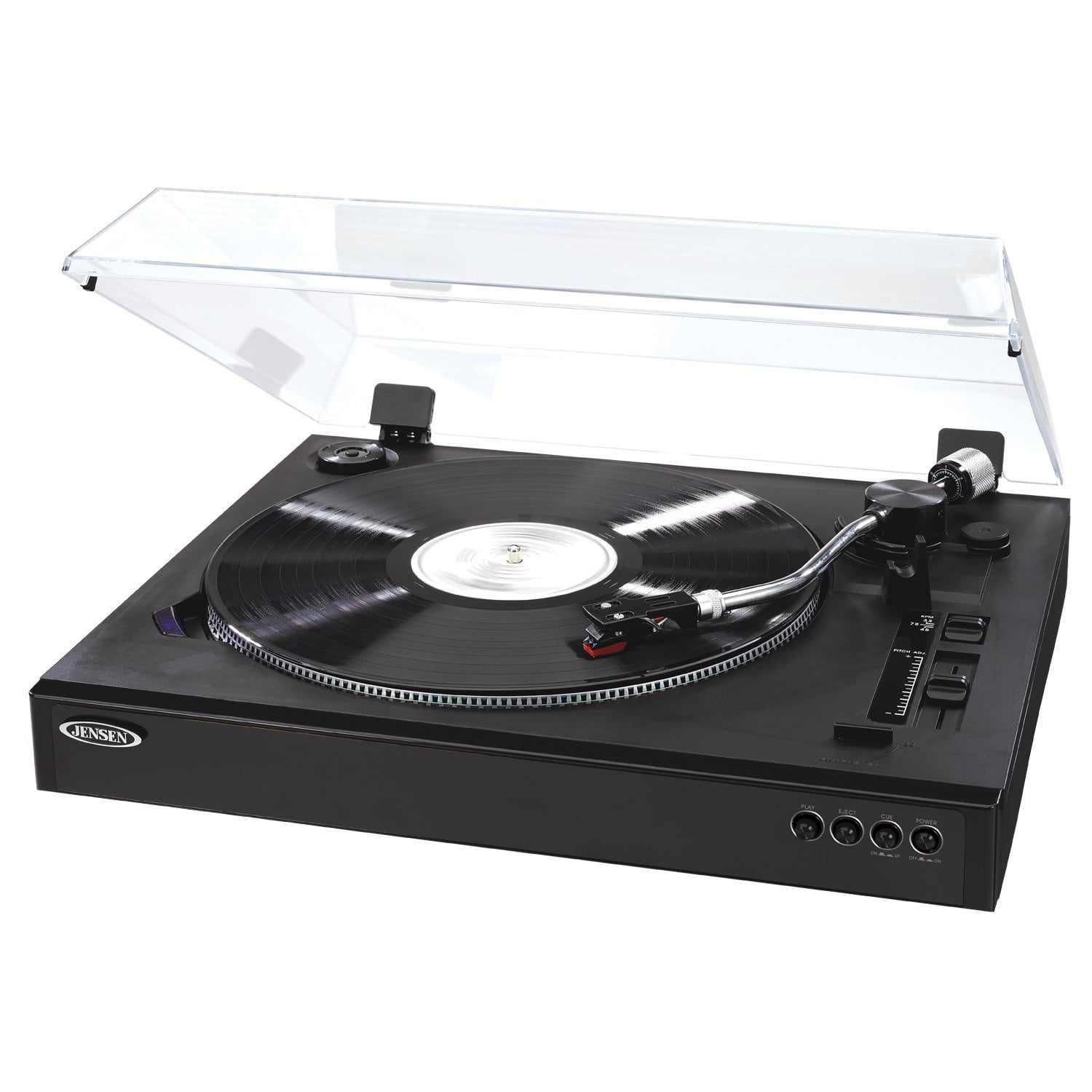
The cartridge receives the vibrations, which are converted to electrical signals through a coil in a magnetic field. As this happens, the vibrations travel along a flexible metal strip and wires housed in the tone arm to the cartridge in the end of the tone arm. With the needle or stylus placed in the outermost groove of the record, the tone arm follows the groove as it spirals inward, traveling across the record in an arc as the record spins beneath it. The stylus sits at one end of the tone arm, which is mounted to the side of the turntable and sits parallel to the record. The pointed end is the only piece that touches the top of the record and it rides around the spiraling grooves of the disk, picking up the vibrations which are ultimately turned back into sound. It is made from a diamond or other hard material, shaped like a cone and suspended by a flexible strip of metal. The stylus, or needle, is the smallest and perhaps the most important component of the record player. We're on our way to finding out what exactly goes on during a record player's playback, but first, we need to understand the basics of how a vinyl record is created. Its mass popularity lasted until about the mid-1980s when cassette tape recordings overtook records. By the mid-20th century, most households had what was then commonly known as a record player and most recently called a turntable. Over time, the design of the gramophone and the recording process were continuously changing, yet the core elements of the needle in a groove remained the same. Meanwhile, the company also manufactured discs recorded by famous opera singers and musicians, giving the public unprecedented access to music. This new design, introduced in 1906, was called the Victrola.

In order to fit more comfortably in a home, the horn was tilted down and the entire device placed in a cabinet. Johnson refined the design of the gramophone, which until that time had been dominated by a large horn to amplify the sound. It manufactured and advertised both gramophones and records. When he resumed work on the phonograph nearly 10 years later, another inventor had moved it one step closer to the record player.īerliner's company merged with that of inventor Eldridge Johnson to become the Victor Talking Machine Company in 1901. Edison put it aside to pursue work on other inventions. Interest in the machine waned as its applications proved impractical in its current state. He considered applying the technology to toys such as talking dolls and music boxes.īut the phonograph proved too difficult for most people to use, and the tinfoil on which the recordings were made did not last. Edison originally thought that the phonograph would be useful in offices for dictation, for families to record their history or for teachers to record lessons.

The phonograph was a breakthrough, as it had the ability not only to record sound, but to play it back. When the cylinder was set to the beginning and the needle placed in the grooves, the original sound was reproduced as the vibrations were amplified.Įdison created his first voice recording by shouting the words to "Mary had a little lamb" into a mouthpiece, causing the sound waves to vibrate a needle and etch the nursery rhyme into tinfoil for playback. A second needle and an amplifier were on the other side.

When sound waves were forced into the receiving end, it caused the membrane to vibrate and the needle to etch a groove into the foil as the cylinder was being turned by the crank, thus recording sound. On one side was a diaphragm, or very thin membrane, connected to a needle. He eventually designed a device he called the phonograph that had a brass cylinder wrapped in tinfoil, which rotated and moved lengthwise when turned by a hand crank.


 0 kommentar(er)
0 kommentar(er)
